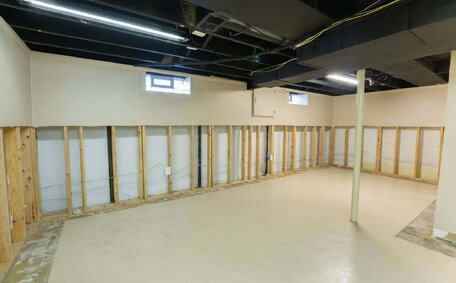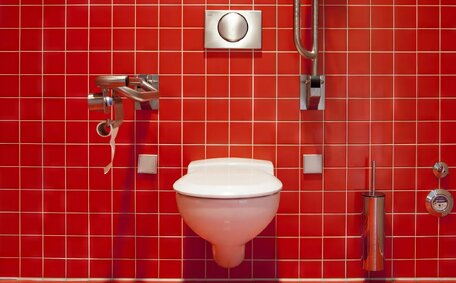Introduction to Gas Line Pressure Testing
Regular natural gas line pressure testing is a critical safety measure for homes and businesses with natural gas connections. Our team at St Peters Plumbing specialises in comprehensive gas line inspections and pressure tests to ensure compliance and prevent hazardous gas leaks.
Gas pressure testing verifies the integrity of the gas system, ensuring it can withstand maximum operating pressures without leaking.
The process requires isolating gas appliances, injecting compressed air or nitrogen into the system, and monitoring for pressure drops under 10% that would signal a leak. Regulations mandate that test pressure should not exceed 1.5 times the maximum operating pressure and permit only minimal pressure loss during the test period.
A successful pressure test confirms that all parts system -- including pipes, joints, valves, and connections -- are completely sealed with no defects that could lead to hazardous gas leaks. Our licensed, fully qualified gas fitters are meticulously certified to conduct detailed pressure tests and offer extensive gas line services.
Routine testing safeguards the efficiency and safety of your fuel gas system, providing peace of mind.
Why Gas Lines Need Pressure Testing
There are several c
Safety Assurance
A detailed pressure test by a licenced gas fitter assures that your home’s gas system is free from defects and operates reliably. This safety check prevents potential gas leaks that could cause fires, explosions, or carbon monoxide poisoning.
Regulatory Compliance
Standards and plumbing codes decree that any new and updated gas system test shall be passed before greenlighting for use. Routine tests are essential, since gas lines can develop problems gradually. Meticulous adherence to test procedures, which can extend over several days, is necessary for regulation compliance.
Identify Needed Maintenance
Pressure tests can reveal when gas pipelines are corroded and joints have become loose or defective over the years. This allows gas fitters to perform maintenance and ensure there are no leak risks within the lines.
Prevent Costly Repairs
Early leak detection often requires only minor repairs, preventing larger issues from developing. Ignoring leaks and forgoing pressure tests can cause a cascade of expensive and perilous emergency repairs later on.
We adhere to required protocols to ensure your gas system is leak-free and safe.
Safety Considerations for Gas Line Pressure Testing
Safe practice is paramount when conducting gas pressure tests in line with established safety protocols. Here are some key safety protocols that must always be followed:
Isolate Gas Supply and Appliances
Before pressurising the gas lines, the entire gas supply system must be completely shut off and shall isolated from any external sources. This includes closing the main gas shutoff valves coming into the building and shutting off all individual appliance supply valves. Gas appliances must be disconnected before testing is carried out.
Use Proper Equipment
Only use equipment designed for gas line testing, such as an approved pump, calibrated psi gauge, flow metre and fittings, ensuring they can handle the necessary operating pressures. Guarantee the integrity of the system by confirming it can manage pressures over the apex of the line’s prescribed operational threshold.
Vent to Outside
During pressurisation, vent any discharged gas away from windows or ignition sources to maintain safety. This prevents dangerous buildup of the pressurising gas indoors.
Check for Leaks
Conduct a thorough check for leaks using a test gauge or an electronic gas detector after pressurising. Monitor how the psi gauge reads for any significant psi drop and inspect all connections, valves, joints, and pipes.
Depressurize Safely
Bleed off test pressures outdoors in a controlled manner after testing is complete. This also helps purge any remaining pressurising gas from the system.
Gas line pressure testing requires specialised training and licensing to ensure safe execution. Trust our experienced, qualified gas fitters at St Peters Plumbing to perform pressure testing properly for full safety assurance.
Qualifications Needed to Perform Gas Line Pressure Tests
Gas line pressure testing requires specific qualifications and licencing to be legally and safely performed. Only certified, experienced gas technicians should carry out these test gas procedures.
Licencing Requirements
Technicians performing gas line pressure tests must have a current gas fitting licence as required by law. In most states this would require obtaining a Gasfitter Licence or Gas Technician Licence through an approved training provider.
AS/NZS 5601 Certification
Technicians in Australia must be certified under AS/NZS 5601 Gas Installations standards to work on and test gas systems. AS/NZS 5601 training equips technicians with a thorough understanding of legal requirements for gas systems.
Working Under Supervision
Apprentice gas fitters may conduct pressure tests exclusively under the supervision of qualified and licenced professionals.
At St Peters Plumbing, our team of licenced gas specialists have undergone extensive training and testing to legally and safely carry out gas line pressure testing services across St Peters.
Preparing for a Gas Line Pressure Test
Proper preparation is crucial to conducting safe, effective gas pressure testing on gas lines. Here are the key steps involved:
Notify Occupants and Shut Off Gas Supply
Inform all occupants about the gas shutdown for testing, evidenced by the stopped meter, to ensure the system is fully isolated. Then locate the gas meter and close the main gas shutoff valve coming into the building before starting. This isolates the entire system.
Disconnect All Gas Appliances
Each appliance must be completely disconnected from the gas line prior to testing. This includes ovens, cooktops, hot water systems, furnaces and any other gas-powered devices. Turn off the shutoff valve at each appliance.
Identify Test Points
Determine the optimal points to introduce pressurised gas into the gas pipe system, as well as points to attach pressure gauges to monitor and bleed off the test pressure.
Inspect Piping System
Visually inspect all black pipe components, joints, valves, and connections for any obvious signs of defects, corrosion or leaks that need to be addressed before testing can commence.
Seal Openings
Any appliance connections, valves or open ends of the piping system should be securely sealed, possibly with teflon tape, to hinder any leaks when the system is pressurised. Use proper threaded caps or plugs.
With proper prep work completed by qualified technicians, a gas system can be safely pressurised to assay the test gas pressure for leak testing. Contact St Peters Plumbing to ensure your gas lines are pressure tested correctly.
Choosing Between Pneumatic and Hydraulic Testing Methods
There are two main methods used for pressure testing gas lines - pneumatic testing and hydraulic testing. The choice between these two methods depends on the specifics of the system that shall be pressure tested.
Pneumatic Testing
This method is commonly used for low and medium pressure systems up to 1,380 kPa (200 psi). It is relatively quick and convenient to perform.
Hydraulic Testing
Hydraulic testing uses water column measurements or another liquid to pressurise the gas piping system. It is the preferred method for high pressure gas lines over 1,380 kPa (200 psi). Water puts less energy into the system in the event of a failure, reducing safety risks.
Hydraulic testing is superior for detecting even small leaks.
Choosing Between Methods
Pneumatic testing is ideal for less complex, low-pressure residential and commercial gas lines, offering speed and cost-effectiveness. Hydraulic testing provides greater safety for industrial and complex piping systems over 200 psi.
Our licensed gas experts at St Peters Plumbing are proficient in conducting both pneumatic and hydraulic testing natural gas systems where essential. We follow all required procedures to deliver compliant, reliable results.
There are two main methods used for pressure testing gas lines - pneumatic testing and hydraulic testing.
Step-by-Step Guide to Conducting a Gas Line Pressure Test
Performing a proper gas line pressure test requires carefully following a step-by-step procedure. Here is a detailed guide:
- Prepare for the test by isolating the gas supply and connecting a pressurising pump and calibrated pressure gauge to the system using appropriate fittings.
- Open valves to pressurise the line slowly. Pressurise to at least 1.5 times the maximum operating pressure.
- After pressurisation, closely monitor for any indications of pressure loss.
- If no leaks are present, gradually release test pressure to equalise with atmospheric pressure.
- Record pressure readings consistently during the test as evidence of compliance.
It is critical to follow structured procedures where the system shall be isolated throughout the pressurisation, testing and depressurisation phases. Our technicians are extensively trained to safely inspect all joint connections and perform thorough tests.
Analyzing Test Results and Identifying Leaks
Analysing a pressure test entails monitoring temperature, consistency, pressure, and gauge readings throughout the testing period. An initial small pressure drop when first pressurised can be normal as the temperature of the compressed gas decreases.
Post-initial settlement, the pressure ought to stabilise with no subsequent leak pressure fluctuations, signifying a sealed system for the remainder of the test.
If pressure continues to drop post-stabilisation or falls beneath the benchmark, it indicates a leak, as the system fails to hold the correct pressure. Drops between 3-10 psi fall within the allowable leakage rate, but any larger drops likely indicate a leak and require closer inspection.
To identify the source of a leak during test, start by using specialised leak detection fluid, an electronic gas detector or applying dish soap solution to joints.
Look for growing bubbles. Listen for a hissing noise indicating escaping gas. Review technical drawings for the pipe layout to trace issue areas. Persistent leaks will require pipe replacement or resealing of joints by qualified technicians.
Rely on St Peters Plumbing experts to accurately analyse pressure data and locate any leaks with sophisticated methods. We meet all requirements for successful pressure testing.
Maintaining Compliance with Industry Regulations
It is critical that all gas line pressure testing complies strictly with mandated industry regulations and standards. Gas fitting professionals have an obligation to adhere to all requirements and procedures outlined in Australian Standard AS/NZS 5601 for gas installations.
For compliance, it’s vital to keep comprehensive records of all pressure tests including sections tested, date, test period, pressures, readings, drops, and conclusive results. Photos documenting testing and results are also recommended.
Compliance helps validate the safety of gas systems and aids in obtaining certification. Failure to properly pressure test or document tests as required could void insurance policies and incur serious penalties. Trust our team at St Peters Plumbing to conduct fully compliant gas line pressure tests.
When to Call a Professional for Gas Line Pressure Testing
At St Peters Plumbing, our qualified specialists have the expertise about gas equipment and training to perform compliant pressure tests safely.
New gas line installations must be pressure tested to confirm there are no leaks before appliances can be connected and the system used. Existing gas lines also require periodic pressure testing as part of a safety assurance programme or if you have concerns about possible leaks.
Should minor issues arise, it remains crucial to promptly contact gas safety experts; DIY repairs or testing is strongly discouraged. Our technicians can expertly identify issues and perform any required repairs or maintenance.
For complete peace of mind regarding the safety of your home or business gas connections, trust St Peters Plumbing to handle all aspects of gas line pressure testing. Email or call us today to schedule certified testing.






